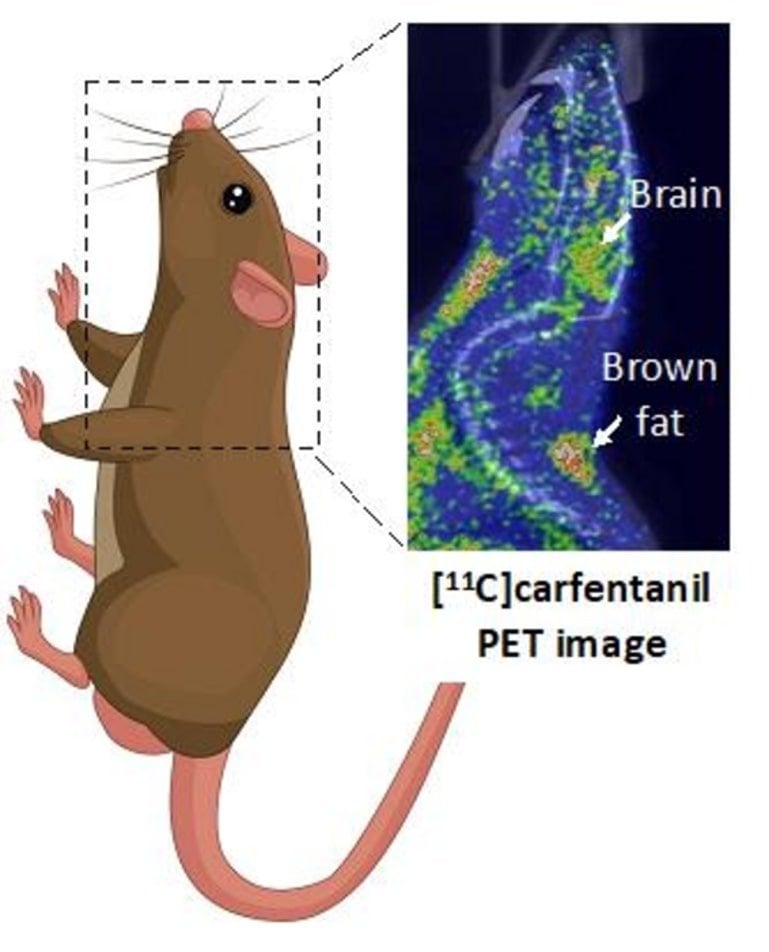Summary: Shorter daylight hours increase opioid receptor signaling in the brown fat of animals.
Source: University of Turku
When the season turns darker and colder, animals’ brown fat starts to grow. The tissue produces heat efficiently and rapidly, and regulates appetite. Brown fat is also present in people.
In a new study conducted at the Turku PET Centre, Finland, researchers observed that shorter daylight hours impact the opioid receptor signalling in the brown fat of animals. When the amount of light diminishes, the opioid receptor levels increase. The observation was done in rats living in an artificial environment imitating seasonal daylight changes.
“In the study, we observed that the number of mu-opioid receptors in brown fat was dependent on the length of daylight the rat was exposed to. This complements our previous findings that day length modulates opioid receptor levels in the brain emotional circuits in humans and rats,” says Senior Researcher Lihua Sun from the Turku PET Centre of the University of Turku.
He states that the opioid receptor activity of brown fat and brain are two separate phenomena. However, they share the same goal of helping a mammal, a person or an animal, adapt both physiologically and also emotionally to the change of seasons.

“Opioid receptor levels in the brain and brown fat might be interconnected, for example strengthening each other’s activity, but more research is needed to confirm this,” Sun emphasises.
New Conquest in Opioid Receptor Research
Professor Anne Roivainen from the Turku PET Centre tells that this is the first time mu-opioid receptor levels have been assessed in peripheral regions using positron emission tomography (PET) imaging.
“The finding highlights that mu-opioid receptors affect the seasonality of brown fat activity. Future studies should further investigate whether mu-opioid receptors in brown fat are directly related to tissue energy consumption”, says Roivainen.
Opioid receptors are parts of the cell through which the opioid hormones can impact the cell. An example of such hormones is endorphin, which promotes pleasure and relieves pain in the body.
Consequently, the functions of opioid receptors in the brain have a central role in both pain and mood and emotions. Abnormalities of receptor function have been linked to psychiatric disorders such as depression and anxiety and eating disorders.
Opioid receptor levels may also be important for the seasonal affective changes such as seasonal affective disorder. Its symptoms include winter blue and overeating.
According to Roivainen and Sun, whether the seasonal variations in mu-opioid receptor levels in the brain and brown fat are underlying the seasonal affective changes still requires more scientific evidence.
About this neuroscience research news
Author: Tuomas Koivula
Source: University of Turku
Contact: Tuomas Koivula – University of Turku
Image: The image is credited to Lihua Sun / Vecteezy.com
Original Research: Open access.
“[11C]carfentanil PET imaging for studying the peripheral opioid system in vivo: Effect of photoperiod on mu-opioid receptor availability in brown adipose tissue” by Lihua Sun et al. European Journal of Nuclear Medicine and Molecular Imaging
Abstract
[11C]carfentanil PET imaging for studying the peripheral opioid system in vivo: Effect of photoperiod on mu-opioid receptor availability in brown adipose tissue
Purpose
Photoperiod determines the metabolic activity of brown adipose tissue (BAT) and affects the food intake and body mass of mammals. Sympathetic innervation of the BAT controls thermogenesis and facilitates physiological adaption to seasonal changes, but the exact mechanism remains elusive. Previous studies have shown that central opioid signaling regulates BAT thermogenesis, and that the expression of the brain mu-opioid receptor (MOR) varies seasonally. Therefore, it is important to know whether MOR expression in BAT shows seasonal variation.
Methods
We determined the effect of photoperiod on BAT MOR availability using [11C]carfentanil positron emission tomography (PET). Adult rats (n = 9) were repeatedly imaged under various photoperiods in order to simulate seasonal changes.
Results
Long photoperiod was associated with low MOR expression in BAT (β = − 0.04, 95% confidence interval: − 0.07, − 0.01), but not in muscles. We confirmed the expression of MOR in BAT and muscle using immunofluorescence staining.
Conclusion
Photoperiod affects MOR availability in BAT. Sympathetic innervation of BAT may influence thermogenesis via the peripheral MOR system. The present study supports the utility of [11C]carfentanil PET to study the peripheral MOR system.






